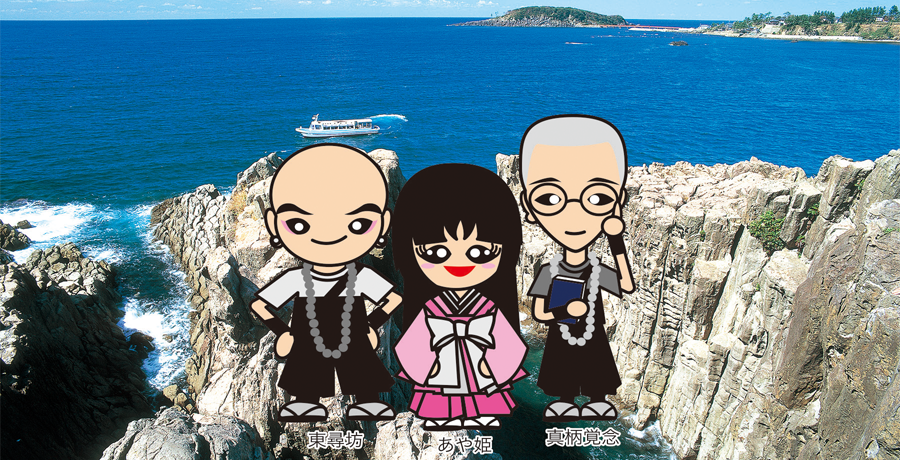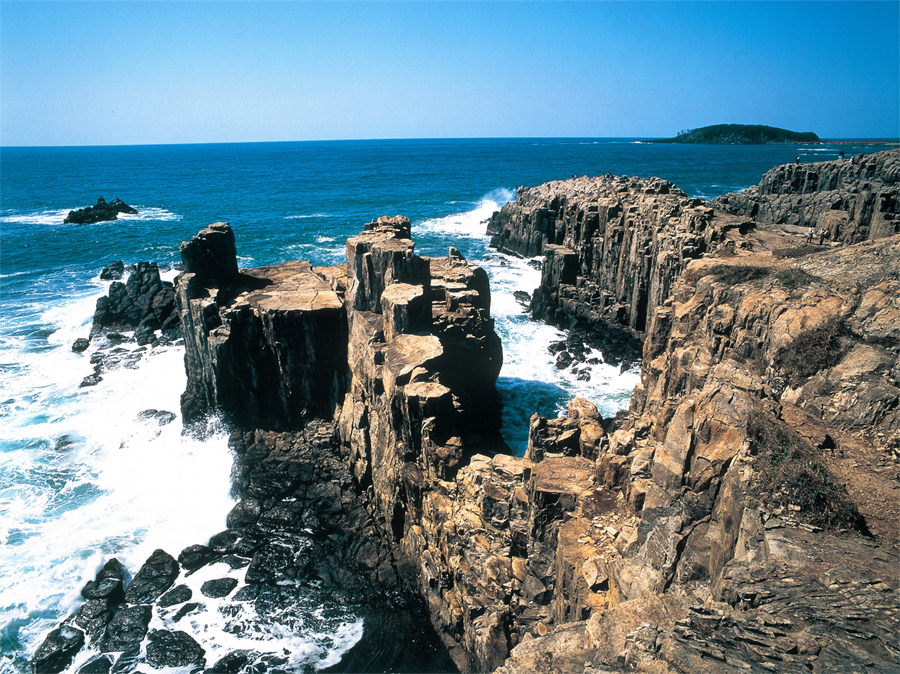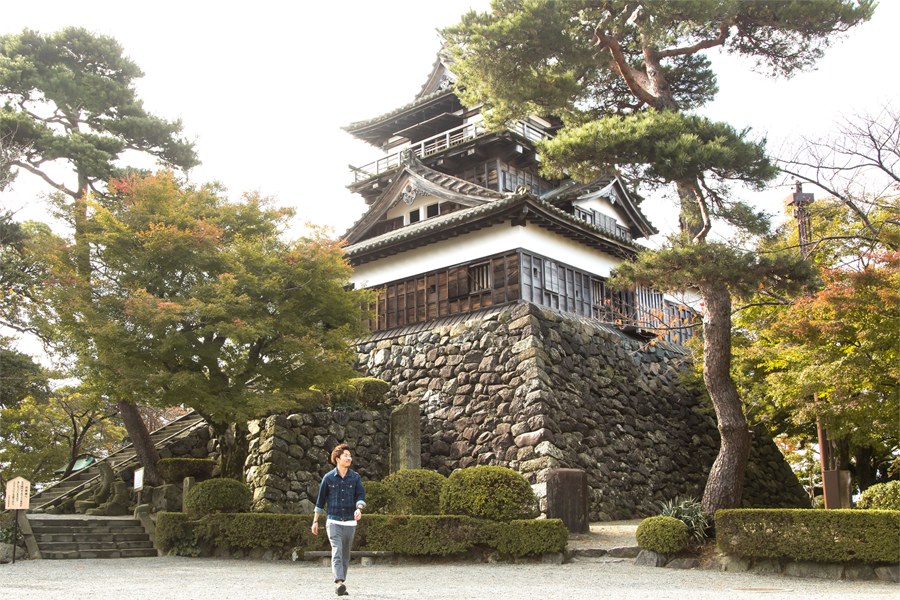What Tojinbo?
Tojinbo is most famous sightseeing spot in Fukui.
Tojinbo is named after the old story that Tojinbo was very strong and clever monk in Heisenji temple and when he visited Mikuni he met the beautiful lady named princess Aya and they fell in love each other.
At the same time Makara Kakunen loved princess Aya,too. Kakunen envied Tojinbo and asked him to go to the seaside and pushed him into the Japan sea.
Tojinbo maranic with Love tries to expand this love story to many people, and decides to have the ultra maranic for and back from Tojinbo to Heisenji.
At Heisenji where is famous for power spot , runners get energy , and runners try to goal at the sunset at Tojinbo

Tojinbo

Featuring its huge pillar-shaped rocks extending over a distance as long as about 1km, Tojinbo , as a synonym for Mikuni Town where it is located , is designated by the Government as a natural monument of scenic beauty. Counted as one of the world’s top three places of such rare configuration, Tojinbo is noted for its magnificent cliffs, among which the one named “Ooike” rises 25m(80ft) above sea level, while commanding as impressive view of the raging waves of the Sea of Japan dashed against the cliffs. There is a pleasure boat service available to allow you to enjoy a fine view of this scenic spot from the sea.
Heisenji Hakusan Shrine

Having flourished in the medieval ages as the base for worship of Mt. Hakusan (located on the border between Ishikawa and Gifu prefectures and known as a sacred mountain for religious worship) , Heisenji Hakusan Shrine is noted for its green-coverd precincts where it is cold even in summer, offering a serene and solemn atmosphere.
Lined with gigantic cedar trees allegedly transported fron the Kuzuryu River (flowing through the Fukui plain into the Sea of Japan), has been selected as one of “Japan’s best 100 paths”
Maruoka Castle

Noted for its Japan’s oldest donjon and designated by the Government as an important cultural property,
Maruoka Castle was constructed in 1576 by Katsutoyo Shibata, a nephew of Katsuie Shibata well known as a warrior of the Warring State period (from the mid-fifteen century to the late sixteen century) ,having governed this area called Echizen Province at that time. This castle is also known as “ Kasumiga Joh”(Mist Castle) because legend says that, when in war, it was enveloped in a fog to protect it against its enemy. The castle is also noted for the several hundreds of cherry blossoms in full bloom early in April every year that it has been selected as one of “Japan’s best 100 cherry-blossom-viewing spots”
